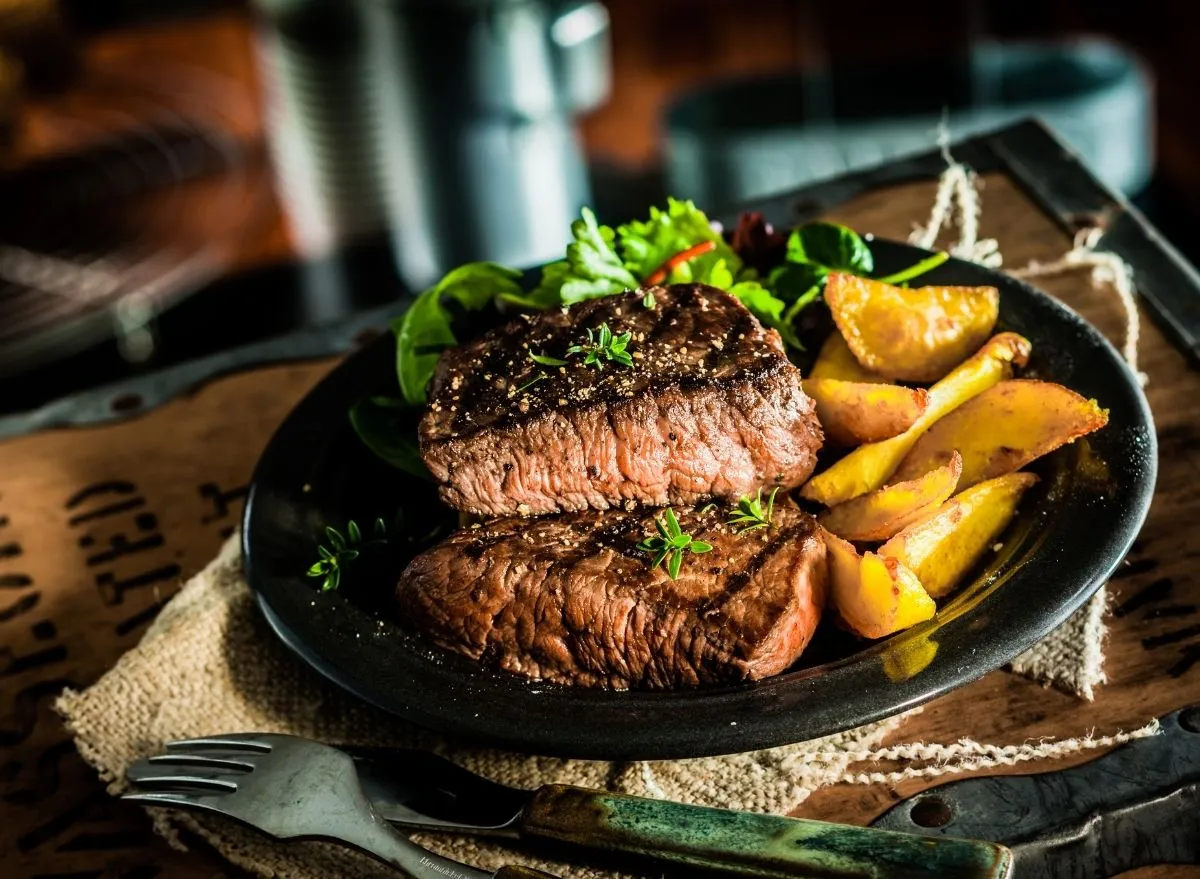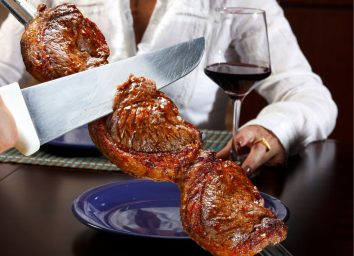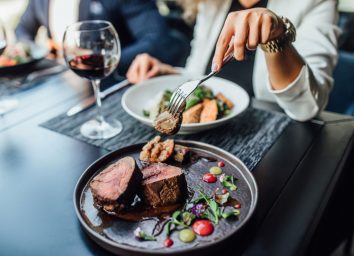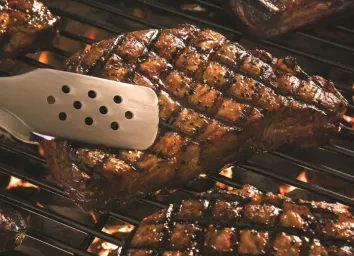The #1 Order to Never Make at a Steakhouse, According to Chefs

From superior fast-food chains to the merits of margarine, there’s plenty to debate about in the wide world of food—but perhaps nothing is as rousing as the doneness of a steak.
Aside from the sheer science of whether certain cuts of steak are healthier than others (or…not), the doneness scale is a matter of personal preference that diners tend to adhere to—and rigorously defend against naysayers. While customers are technically always right, and opinions relating to steak doneness are a personal matter, there are still some hard facts that shouldn’t be ignored.
From rare to well-done, there’s a wide scale of cooking options for steaks of all cuts, and each temperature preference comes with its own pros and cons. The fact of the matter is that even if you’re dining at one of the best steakhouses in the country, doneness makes a huge difference in the final product.
Simply put, the more cooking that is done to a steak, even if it’s a top-tier cut of meat from a high-quality steakhouse chain, the more the integrity of the product is going to be hindered or masked. Spoiler alert: well-done steak is something you should never order at a steakhouse.
At Rare Steakhouse at Encore Boston Harbor, this is a tenet to live by. The swanky steakhouse, which takes its meat quality so seriously that doneness is literally cooked into its “rare” name, is all about “redefined creative classics and exceptional cuts.”
Rare Steakhouse has one of the most comprehensive—and meticulously sourced—steak selections in Boston, featuring elite Japanese cuts from the Kagoshima prefecture, and domestic cuts from the likes of Idaho’s esteemed Snake River Farms. Naturally, when a restaurant goes to such great lengths to ensure the utmost in quality, it doesn’t behoove anyone to cook the meat into leather. And the reasons, according to executive chef Kyle Bradish, are abundantly clear.
“The reason why well-done is not the greatest is because of all the loss of flavor, fat, juice, and the promotion of tough dry texture after it gets cooked past around 140 degrees,” he told us.
Conversely, while overcooking steak can lead to dried-out meat and an unpleasantly chewy texture, skewing towards the other end of the doneness scale can yield much more palatable results. “It’s texturally pleasing, and you taste the flavor of the meat,” says Bradish on the benefits of cooking steaks rare to medium-rare. “The fat will melt just right while enjoying your steak.”
For proof, the chef suggests ordering a couple casual 24-ounce cowboy rib-eye steaks, and doing a side-by-side taste and texture test by getting one medium-rare and another medium-well. The difference, says the chef, “will be substantial for you to lean more towards the benefits of a lesser cooked steak.”
Bradish’s sentiments echo a longstanding ethos in the restaurant industry at large, about the notorious woes of well-done steaks. Anthony Bourdain himself famously wrote a piece titled “Don’t Eat Before Reading This,” casting a light on the harsh reality of over-cooked steak.
In the brutally honest article, he said: “People who order their meat well-done perform a valuable service for those of us in the business who are cost-conscious: they pay for the privilege of eating our garbage.” He elaborated on a kitchen tradition called “save for well-done,” wherein whenever chefs find “a particularly unlovely piece of steak—tough, riddled with nerve and connective tissue, off the hip end of the loin, and maybe a little stinky from age,” they save it for when a customer orders a well-done steak. Oof.
It confirms murky rumors about restaurants deliberately using inferior cuts of meat for well-done orders, which in and of itself should dissuade you from ordering anything over-cooked. Because at the end of the day, no amount of béarnaise or lobster tail can mask the inferior texture and flavor of a dried-out slab of meat. And whether or not you’re ordering a filet at an upscale chef-driven concept like Rare Steakhouse or a regional chain like Texas Roadhouse, the difference a few degrees makes can be monumental.









